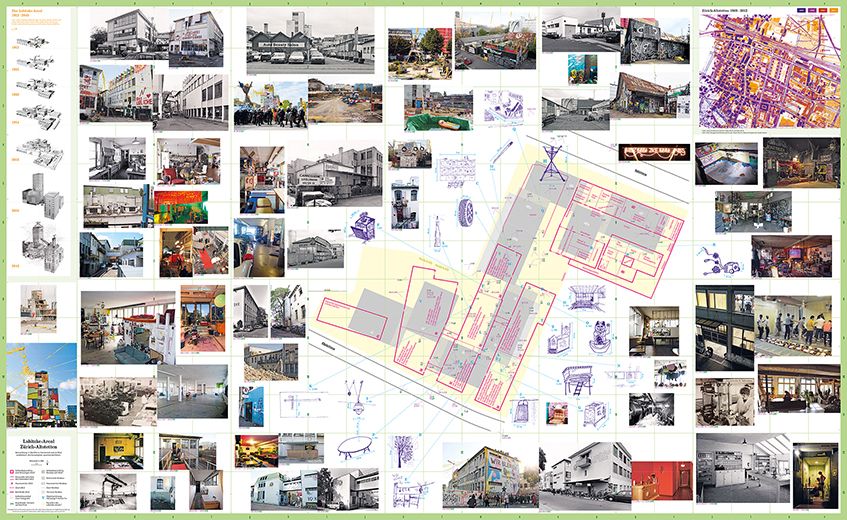Zurich’s Labitzke Farben: History of the interim.
23.02.2021
A city is a vibrant entity that is constantly changing. In Zurich-Altstetten, a development began in the 1980s that was essentially characterised by the departure of various businesses and industrial companies, including Labitzke Farben AG. After a merger with other paint companies to form Trilacolor AG in 1978, the production of furniture paints was moved to Zofingen. Only letterpress and offset inks were still produced in Altstetten. The rooms that were no longer needed were rented out to other users from 1982 onwards.
In 1990, the site was sold to a real estate dealer known as the Immo-King of the Langstrasse, who rented out the factory space to tradespeople, residential communities and artists as a temporary use; it was later sold on to well known real estate company.
In the sense of an archaeology of the present, the book “Labitzke Farben” by Edition Hochparterre examines these interim uses of the Labitzke site in Zurich-Altstetten. On the approximately 10,000 square metre site of the former Labitzke paint factory, car repair shops, migration associations, clubs, residential communities, a mosque and even a brothel settled for around 25 years. A unique place was created that became a social laboratory for new forms of living together. After the sale of the area in 2011, it was also the scene of a sometimes fierce struggle for urban living and open space until its eviction in summer 2014.
The book ‘Labitzke Farben’, recently published by Edition Hochparterre, gives the inside view of the author, who had privileged access as a resident of the area. Diana Bärmann tells the history of the area in many voices with a detailed folding map, a ‘displacement map’, an interview collage, many photos and a collection of object drawings. Ingenious reference systems make different reading paths possible and elegantly connect photography, text, drawing and map of this book object.
The main part of the book consists of a text that reconstructs the history of the site from the late 1980s to the turbulent eviction in 2014 and its consequences. Conversations with users of the area in the form of a collage of interviews provide a deeper insight into life and the numerous changes during the interim use.
Today, the Labitzke site of around 10,000 square metres has seven publicly accessible squares; the 277 rental flats with between 1.5 and 4.5 rooms as well as the commercial spaces and offices of the settlement are distributed over a total of eight buildings of varying heights. And the irony of fate: like the end of the supposed housing utopia on the site that was once accompanied by violent unrest, the occupation of the flats by the tenants was also accompanied by negative headlines: due to a lack of move-in permits, this was briefly delayed by several weeks in March 2018. In the meantime, the tenants were accommodated in hotels.
About the book
Labitzke Farben. Archäologische Untersuchung einer Stadtutopie
Autorin: Diana Bärmann, Gestaltung: Andreas Bertschi.
347 Seiten, rund 140 Fotos, Pläne, Grafiken und Zeichnungen.
Schweizer Broschur mit Faltplan zum Herausnehmen. 12,4 x 21,4 cm.
ISBN 978-3-909928-55-2. Fr. 39.– / € 35.–
The book can be ordered directly at Verlag Edition Hochparterre.